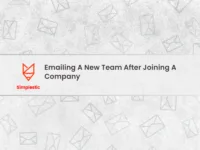Understanding Call to Action: The Key to Effective Marketing
In the world of marketing, a well-crafted message can make all the difference between a successful campaign and a missed opportunity. One of the most crucial elements of any marketing strategy is the Call to Action (CTA). This blog will delve into what a Call to Action is, why it is essential, how to create effective CTAs, and provide examples and best practices for implementation.
What Is a Call to Action?
A Call to Action (CTA) is a prompt that encourages an audience to take a specific action. It is usually presented as a button, link, or a piece of text that directs users towards a desired outcome. CTAs can be found in various forms of content, including websites, emails, social media posts, advertisements, and landing pages.
The primary goal of a CTA is to convert visitors into leads or customers by guiding them toward the next step in their journey. This could involve signing up for a newsletter, downloading a resource, making a purchase, or following a social media account.
The Importance of a Call to Action
CTAs are vital for several reasons:
- Guidance: They provide clear instructions on what the audience should do next. Without a CTA, users may feel lost and unsure of how to proceed.
- Increased Conversions: Effective CTAs can significantly boost conversion rates. By explicitly stating what you want users to do, you reduce friction and encourage action.
- Measurement of Success: CTAs allow marketers to track user engagement and the effectiveness of campaigns. By analyzing how many users click on a CTA, businesses can assess their marketing strategies and make data-driven decisions.
- Enhancing User Experience: A well-placed CTA can enhance the overall user experience by making navigation easier and more intuitive.
Types of Calls to Action
CTAs come in various forms, depending on the desired action. Here are some common types:
- Sign-Up CTAs: These encourage users to subscribe to newsletters, webinars, or free trials. For example, “Sign up for our newsletter and get 10% off your first purchase!”
- Download CTAs: These prompt users to download resources such as eBooks, whitepapers, or guides. An example could be, “Download our free guide to mastering social media marketing.”
- Buy Now CTAs: These are used in e-commerce to encourage immediate purchases. For instance, “Buy now and enjoy free shipping on orders over $50!”
- Learn More CTAs: These invite users to explore additional information about a product or service. An example might be, “Learn more about our premium features.”
- Contact CTAs: These encourage users to reach out for more information or assistance. For example, “Contact us for a free consultation.”
- Follow CTAs: These prompt users to follow a brand on social media. An example could be, “Follow us on Instagram for the latest updates!”
How to Create an Effective Call to Action
Creating an effective CTA involves several key components:
a. Use Action-Oriented Language
Your CTA should start with a strong verb that clearly indicates the action you want users to take. Examples include “Download,” “Subscribe,” “Buy,” “Join,” or “Learn.” Action-oriented language helps convey urgency and encourages users to act immediately.
b. Create a Sense of Urgency
Incorporating urgency into your CTA can significantly increase conversion rates. Phrases like “Limited time offer,” “Act now,” or “Only a few left!” can motivate users to take action quickly.
c. Be Clear and Concise
Your CTA should be straightforward and easy to understand. Avoid jargon or complex language that might confuse users. A clear message will help users know exactly what to expect when they click the CTA.
d. Highlight Benefits
Emphasize the benefits users will receive by taking action. For example, instead of saying “Sign up,” you might say “Sign up to receive exclusive discounts and tips.” This helps users understand the value of taking the desired action.
e. Design Matters
The design of your CTA is crucial for attracting attention. Use contrasting colors, bold fonts, and strategic placement to ensure your CTA stands out on the page. Consider using buttons instead of plain text links, as they are more visually appealing and clickable.
f. Test and Optimize
A/B testing is essential for determining the effectiveness of your CTAs. Experiment with different wording, designs, and placements to see what resonates best with your audience. Use analytics to track performance and make data-driven decisions for future campaigns.
Best Practices for CTAs
To maximize the effectiveness of your CTAs, consider the following best practices:
a. Place CTAs Strategically
Position your CTAs where users are most likely to engage with them. Common placements include above the fold, at the end of blog posts, within content, and on landing pages. Ensure that CTAs are easily accessible without requiring excessive scrolling.
b. Use Multiple CTAs
Don’t be afraid to use multiple CTAs within a single piece of content. However, avoid overwhelming users with too many options. Instead, provide a primary CTA and a secondary one that complements it.
c. Personalize Your CTAs
Personalization can significantly enhance user engagement. Use data to tailor your CTAs based on user behavior, demographics, or preferences. For example, a returning customer might see a CTA for “Exclusive Offers Just for You!”
d. Ensure Mobile Responsiveness
With the increasing use of mobile devices, ensure that your CTAs are mobile-friendly. Make sure buttons are large enough to tap easily and that the text is legible on smaller screens.
e. Monitor Performance
Regularly analyze the performance of your CTAs. Use tools like Google Analytics to track click-through rates, conversion rates, and user behavior. This data will help you identify areas for improvement and optimize your CTAs for better results.
Examples of Effective CTAs
To illustrate the principles discussed, here are some examples of effective CTAs:
a. E-Commerce
“Shop Now and Get 20% Off Your First Order!”
This CTA uses action-oriented language, highlights a benefit (discount), and creates urgency by specifying that it’s for first-time customers.
b. SaaS Product
“Start Your Free Trial Today!”
This CTA encourages immediate action and emphasizes the risk-free nature of the offer, making it more appealing to potential users.
c. Blog Subscription
“Join Our Community and Get Weekly Tips Straight to Your Inbox!”
This CTA highlights the benefits of joining the community and uses action-oriented language to encourage sign-ups.
d. Non-Profit Organization
“Donate Now to Make a Difference!”
This CTA appeals to the audience’s emotions and emphasizes the impact of their contribution, encouraging immediate action.
e. Event Registration
“Reserve Your Spot Now for Our Upcoming Webinar!”
This CTA creates urgency by using the phrase “Reserve Your Spot Now,” encouraging users to take immediate action to secure their place at the event. It clearly indicates what the user will gain by clicking—access to valuable information.
f. Content Download
“Download Our Free eBook and Unlock Expert Insights!”
This CTA not only prompts the user to take action but also highlights the benefit of gaining expert insights, making it more enticing.
g. Social Media Engagement
“Follow Us on Instagram for Daily Inspiration!”
Here, the CTA encourages users to engage with the brand on social media, emphasizing the benefit of receiving daily inspiration, which can resonate well with audiences looking for motivation or ideas.
h. Feedback Request
“Share Your Thoughts! Click Here to Take Our Quick Survey.”
This CTA encourages user engagement and emphasizes that the survey is quick, making it more likely that users will participate.
Common Mistakes to Avoid
While crafting CTAs, it’s essential to avoid common pitfalls that can hinder their effectiveness:
a. Being Vague
Avoid vague language that doesn’t clearly communicate what action you want users to take. Instead of saying “Click here,” specify the action, such as “Download the Guide.”
b. Overloading with Options
Too many CTAs can overwhelm users and lead to decision paralysis. Focus on one primary CTA and, if necessary, a secondary one that complements it.
c. Neglecting Design
A poorly designed CTA can go unnoticed. Ensure that your CTAs are visually appealing, easy to read, and stand out from the rest of the content.
d. Ignoring Mobile Optimization
With a significant portion of web traffic coming from mobile devices, failing to optimize CTAs for mobile can lead to lost opportunities. Ensure that buttons are easily clickable and that text is legible on smaller screens.
e. Lack of Testing
Failing to test and optimize your CTAs can result in missed opportunities for improvement. Regularly A/B test different versions of your CTAs to identify what works best for your audience.
f. Forgetting to Align with Content
CTAs should be relevant to the content they accompany. Ensure that the CTA aligns with the message and purpose of the content to maintain coherence and encourage action.
A well-crafted Call to Action is a critical component of any marketing strategy. It serves as a guiding light for your audience, directing them toward the desired action and significantly impacting conversion rates. By understanding what makes an effective CTA and implementing best practices, you can create compelling prompts that resonate with your audience and drive engagement.
Key Takeaways:
- Define Your Goal: Clearly identify the action you want your audience to take and tailor your CTA to support that goal.
- Use Action-Oriented Language: Start your CTAs with strong verbs that encourage immediate action.
- Create Urgency: Phrases that convey urgency can motivate users to act quickly.
- Be Clear and Concise: Ensure your message is straightforward and easy to understand.
- Highlight Benefits: Clearly communicate the value users will gain by taking action.
- Design Matters: Use visually appealing designs that make your CTAs stand out.
- Test and Optimize: Regularly analyze the performance of your CTAs and make data-driven adjustments.
- Avoid Common Pitfalls: Steer clear of vague language, overcrowding with options, and neglecting mobile optimization.
By following these principles and continuously refining your approach, you can harness the power of Calls to Action to enhance your marketing efforts and achieve your business objectives. Whether you’re looking to increase newsletter sign-ups, boost product sales, or engage your audience on social media, a strategic and well-executed CTA can make all the difference.
Additional Resources for Further Learning
To deepen your understanding of Calls to Action and enhance your marketing skills, consider exploring the following resources:
- Books:
- “Made to Stick: Why Some Ideas Survive and Others Die” by Chip Heath and Dan Heath – This book explores why some ideas are more effective than others, including the importance of clear messaging.
- “Contagious: How to Build Word of Mouth in the Digital Age” by Jonah Berger – This book delves into what makes content shareable and how to create compelling messages.
- Online Courses:
- Platforms like Coursera, Udemy, and LinkedIn Learning offer courses on digital marketing, content creation, and conversion optimization that include sections on effective CTAs.
- Blogs and Articles:
- Websites like HubSpot, Neil Patel, and Buffer frequently publish articles on marketing strategies, including how to create effective CTAs.
- Webinars and Workshops:
- Many marketing organizations host webinars and workshops that focus on conversion optimization and effective marketing strategies, providing valuable insights and practical tips.
Related: How to Write a Marketing Campaign Plan
In the ever-evolving landscape of digital marketing, the importance of a strong Call to Action cannot be overstated. It serves as a bridge between your content and your audience’s next steps, guiding them toward meaningful engagement with your brand. By crafting effective CTAs that resonate with your audience and align with your marketing goals, you can significantly enhance your conversion rates and drive greater success for your business.
Remember, the key to a successful CTA is not just in its creation but also in its continuous refinement and adaptation based on user feedback and performance metrics. Stay attuned to your audience’s needs and preferences, and let that inform your CTAs to ensure they remain relevant and effective.
With a strategic approach to Calls to Action, you can harness their power to foster stronger connections with your audience, ultimately leading to increased engagement, loyalty, and conversions. Start implementing these strategies today and watch as your marketing efforts yield impressive results!




